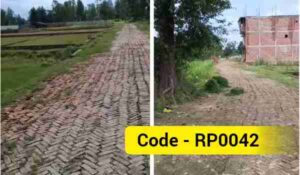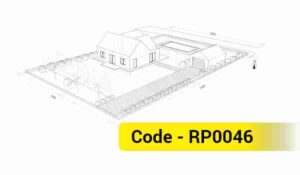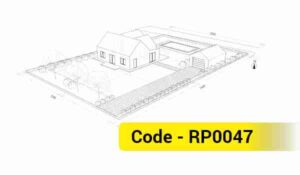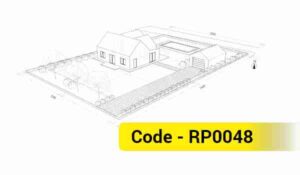Uttar Pradesh Building Construction and Development By-Laws 2025: A Detailed Analysis of House Plan Approval Reforms
The Uttar Pradesh government’s recent approval of the Building Construction and Development By-Laws 2025 marks a transformative step toward simplifying, streamlining, and making the house plan approval process more transparent and citizen-friendly. These by-laws not only provide relief to small and middle-class plot owners but also aim to curb corruption, reduce bureaucratic delays, and promote planned development in both urban and rural areas. In this blog, we offer an in-depth analysis of the provisions, socio-economic impacts, potential challenges, and future implications of this landmark reform.

Key Provisions: A Comprehensive Overview
- Exemption from Plan Approval for Plots up to 1000 Sq. Ft.
- Details: Residential plots up to 1000 square feet and commercial plots up to 300 square feet no longer require plan approval from development authorities.
- Objective: This provision simplifies the construction process for small plot owners, particularly from low and middle-income groups, who form a significant portion of Uttar Pradesh’s population. It eliminates the burden of complex procedures and lengthy paperwork.
- Impact: This exemption will reduce construction costs and save time for small homeowners. Previously, obtaining plan approval could cost thousands of rupees and take months due to bureaucratic hurdles.
- Architect’s Certificate for Plots up to 5000 Sq. Ft.
- Details: For residential plots up to 5000 square feet and commercial plots up to 2000 square feet, a certificate from a registered architect will suffice, eliminating the need for development authority approval.
- Objective: This decentralizes the approval process, reduces the burden on authorities, and empowers architects to take on greater responsibility, thereby speeding up the process.
- Impact: This is a significant relief for medium-sized plot owners and small businesses. However, ensuring the accountability and credibility of architects will be a key challenge.
- Digital System: “Fast Pass” Software
- Details: The Lucknow Development Authority (LDA) is developing a “Fast Pass” software to make the plan approval process fully online. Architects can upload plans created on AutoCAD, potentially reducing costs by up to 90%, as claimed by authorities.
- Objective: The digital system aims to enhance transparency, curb corruption, and expedite the approval process.
- Impact: This is a game-changer for tech-savvy urban populations. However, limited digital literacy and internet access in rural areas could pose challenges.
- Time-Bound NOC Process
- Details: Departments such as fire services and water authorities must issue No Objection Certificates (NOCs) within 7 to 15 days. If the NOC is not issued within this period, it will be deemed automatically approved.
- Objective: To eliminate bureaucratic delays and streamline the approval process.
- Impact: This ensures timely processing but relies heavily on inter-departmental coordination and efficiency. Automatic approval could be misused if departments fail to comply.
- Other Provisions
- Apartment Construction: The minimum plot size for apartment construction has been reduced from 2000 square meters to 1000 square meters.
- Commercial Use: Residential buildings along roads 24 meters or wider can now house shops or offices without requiring plan modifications.
- Rural Regulations: Buildings larger than 300 square meters in rural areas will require plan approval through district panchayats.
- Elimination of Municipal NOC: The requirement for NOCs from municipal corporations has been removed, further simplifying the process.
Read More…
- Registration Act 2025 vs. 1908: A Detailed Comparative Analysis and Future Prospects
- Laws Governing the Sale of Land by Scheduled Caste Landowners to General Category in Uttar Pradesh
- Understanding Section 80 (Section 143) of the Uttar Pradesh Revenue Code, 2006
- Succession Laws in Uttar Pradesh
- 12 Years of Possession (Adverse Possession) and the Property is Yours? The Complete Story of the Limitation Act and Supreme Court Rulings!
- Land Acquisition Act 2013: The Real Story of Farmers’ Rights!
Socio-Economic Impacts: A Broader Perspective
- Economic Impacts
- Cost Reduction: The exemption for small plots and the digital system will significantly lower construction costs. The “Fast Pass” software’s claim of a 90% cost reduction could be a game-changer if implemented effectively.
- Boost to Real Estate: Reducing the apartment construction threshold to 1000 square meters will enable smaller developers to enter the market, increasing housing projects in urban areas.
- Commercial Growth: Allowing commercial use along wider roads will spur economic activity, particularly in smaller towns and cities.
- Social Impacts
- Relief for Middle and Lower-Income Groups: Small plot owners in urban and rural areas can now build homes with less expense and time, addressing a long-standing pain point.
- Urban-Rural Balance: Extending plan approval rules to rural areas will curb unplanned construction, promoting better infrastructure utilization.
- Transparency and Trust: The digital system and time-bound NOC process will enhance public trust in government processes by reducing opportunities for corruption.
- Environmental Impacts
- Planned Development: Mandating plan approvals in rural areas will help regulate unauthorized constructions, such as illegal colonies, promoting sustainable development.
- Challenge: The exemption for small plots could lead to unsafe or unregulated constructions, potentially harming the environment if not monitored properly.
Potential Challenges: What Could Go Wrong?
- Lack of Awareness and Training
- In rural and smaller urban areas, lack of awareness about the new rules could limit their benefits.
- District panchayats and local authorities will require training and resources to implement these changes effectively.
- Architect Accountability
- Increased reliance on architects’ certificates heightens their responsibility. Issuance of incorrect certificates could lead to unsafe constructions, necessitating a robust regulatory framework.
- Digital Literacy and Access
- The “Fast Pass” software requires internet access and technical knowledge, which may be limited in rural areas and smaller towns.
- Strengthening digital infrastructure and literacy programs will be critical for equitable access.
- Monitoring and Compliance
- The exemption for small plots could lead to misuse, such as non-compliance with safety standards or unauthorized constructions.
- Development authorities and district panchayats will need to enhance monitoring mechanisms and conduct regular inspections.
- Inter-Departmental Coordination
- The time-bound NOC process depends on seamless coordination between departments. Delays or inefficiencies could lead to misuse of the automatic approval clause.
Future Prospects: Will This Bring Lasting Change?
- Urbanization and Economic Growth
The by-laws support Uttar Pradesh’s rapid urbanization by facilitating housing and commercial projects. The relaxed norms for apartments and commercial use will create opportunities for developers and businesses, boosting economic growth. - Digital Revolution
The “Fast Pass” software could set a precedent for tech-driven governance. If successful, it may serve as a model for other states to streamline administrative processes. - Rural Development
Extending plan approval rules to rural areas will promote planned development, but success will depend on strengthening rural infrastructure and awareness campaigns. - Policy Refinement
The government’s call for public suggestions and objections is a positive step toward inclusive policymaking. Incorporating public feedback could make the by-laws more effective and address potential gaps.
Conclusion: A Progressive Step, But Caution Is Key
The Building Construction and Development By-Laws 2025 represent a bold and progressive move to simplify the house plan approval process in Uttar Pradesh. By easing regulations for small plot owners, promoting digitalization, and ensuring time-bound processes, the by-laws address longstanding issues of cost, delays, and corruption. They also pave the way for planned urban and rural development, fostering economic growth and improving access to housing.
However, the success of these reforms hinges on effective implementation, public awareness, robust monitoring, and addressing digital disparities. Challenges such as architect accountability, rural infrastructure, and departmental coordination must be tackled proactively to prevent misuse and ensure equitable benefits.














